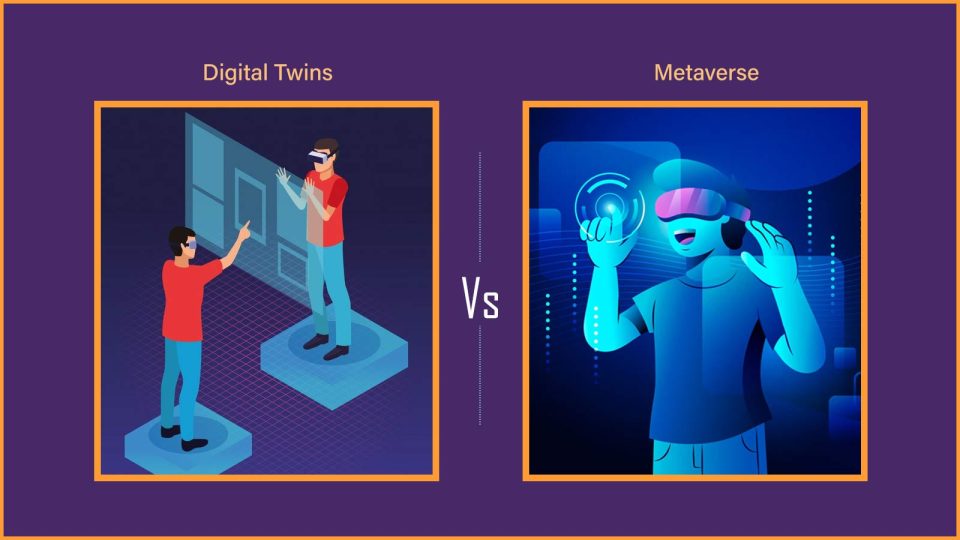In today’s rapidly advancing IT industry, businesses are increasingly questioning the distinctions between digital twins and the metaverse.
Both the Metaverse and digital twins hold transformative potential for virtual interactions. The Metaverse aims to create a fully immersive 3D environment by leveraging digitized replicas of the real world, providing users with a seamless and engaging experience. As the Metaverse expands, organizations are exploring its capabilities to unlock new opportunities and integrate innovative solutions.
Conversely, digital twins enable organizations to replicate real-world environments with precise dimensional accuracy within the virtual realm of the Metaverse. This integration allows businesses to simulate, analyze, and optimize real-world operations in a virtual setting.
The growing interest in these technologies is evident in recent inquiries received by SoftServe. Their analysis reveals that:
- 23% of organizations are in the reveal stage, exploring the potential and value of the industrial Metaverse and digital twins.
- 61% are in the transform stage, where they are defining business cases and seeking expert guidance for solution design, technology evaluation, and advisory support.
- 16% are at the implementation stage, requiring specialized expertise in robotics, extended reality (XR)/virtual reality (VR), artificial intelligence (AI)/machine learning (ML), and the Internet of Things (IoT) to advance their projects.
As more businesses and leaders view the industrial Metaverse and digital twins as pivotal to their digital evolution, understanding their unique roles and applications becomes essential.
Also Read: With The Growth of Metaverse: What Cybersecurity Challenges Should IT Teams Prep For?
Understanding the Metaverse
The metaverse has emerged as a prominent topic of discussion in recent times. Despite variations in its definition, several core elements define the concept. The metaverse encompasses a vast, interconnected network of persistent virtual spaces where users’ digital avatars can interact with each other and the environment. This network is continually evolving, driven by advancements in virtual reality (VR) headsets and other projection technologies.
While the consumer-focused metaverse has garnered attention for its social and gaming applications, the industrial metaverse has begun to make substantial strides. The metaverse represents a global 3D network, supported by the transition to Web 3.0, blockchain technology, and decentralized systems. These technologies facilitate the creation and exchange of digital assets, such as NFTs, which can be used for virtual transactions.
The metaverse rests on three key pillars:
- Virtual Reality (VR): This technology creates immersive, computer-generated 3D environments that respond naturally to user interactions. VR systems, like the Oculus Quest, are central to the metaverse experience.
- Augmented Reality (AR): AR overlays digital information, such as text, graphics, audio, and video, onto the real world. Applications like “Pokémon Go” exemplify AR by blending virtual elements with physical surroundings.
- 3D Visualization: This involves rendering data in a three-dimensional space, enhancing users’ ability to interact with and understand complex information.
Defining the Digital Twin
A digital twin is a sophisticated virtual model representing a physical process, product, or service. This technology bridges the gap between the physical and digital realms, enabling detailed analysis and real-time monitoring. By leveraging data and simulations, digital twins help prevent potential issues, minimize downtime, and uncover new opportunities for innovation and planning.
Digital twins are continually updated with real-time data and utilize simulation, machine learning, and reasoning to support informed decision-making. Essentially, a digital twin mirrors its physical counterpart in the digital domain. It is connected through sensors and IoT technology, ensuring that any changes or movements in the physical object are accurately reflected in its digital model. This synchronization allows for precise monitoring and analysis of both the virtual and physical worlds.
Also Read: What CIOs and IT Leaders Need to Know About Spatial Computing?
Debunking Common Misconceptions About the Metaverse
Misconception #1: The Metaverse Already Exists
The Metaverse is often mischaracterized as a fully realized entity. In reality, it represents the future evolution of the Internet—an interconnected, spatial virtual world operating in real-time, akin to a 3D Internet. While technologies such as VR and gaming engines are foundational components, we are years away from a fully developed, unified Metaverse. Current platforms like Decentraland or Facebook Horizon are isolated systems and do not yet provide the continuous, interconnected experience envisioned for the Metaverse.
Misconception #2: Gaming Platforms are the Metaverse
Platforms such as Roblox and Minecraft are often cited in discussions about the Metaverse due to their social aspects and virtual environments. However, they are not the Metaverse itself but rather meta-platforms—part of the broader Metaverse ecosystem in development. These platforms lack the interconnectivity and continuity required to fully embody the Metaverse concept.
Misconception #3: Brands are Already Implementing Metaverse Campaigns
Many brands are experimenting with avatars, digital clothing, and branded virtual environments, often framing these efforts as Metaverse campaigns. While these initiatives explore new ways of engaging consumers, they are more about leveraging current technology within a Metaverse narrative rather than genuinely pioneering it. Effective Metaverse marketing will involve more than just publicity stunts; it requires a deep integration with the evolving digital ecosystem.
Misconception #4: The Metaverse Will Replace the Real World
The Metaverse is not set to replace physical reality. Instead, it will enhance and complement our analogue lives, representing an advanced stage of the Internet’s development. While it will influence how we socialize, work, learn, and play, our physical existence will remain integral to our daily lives.


